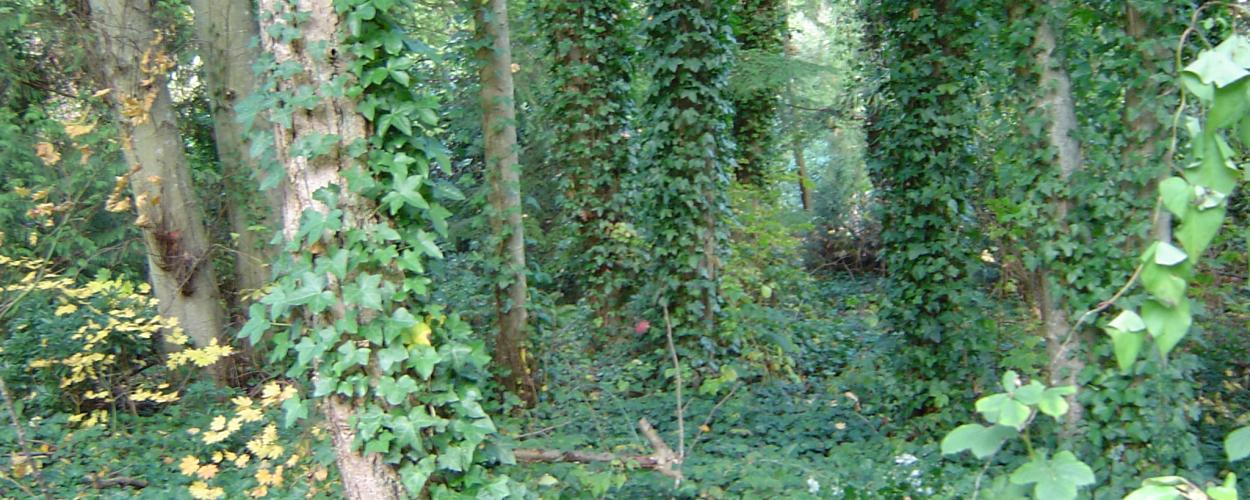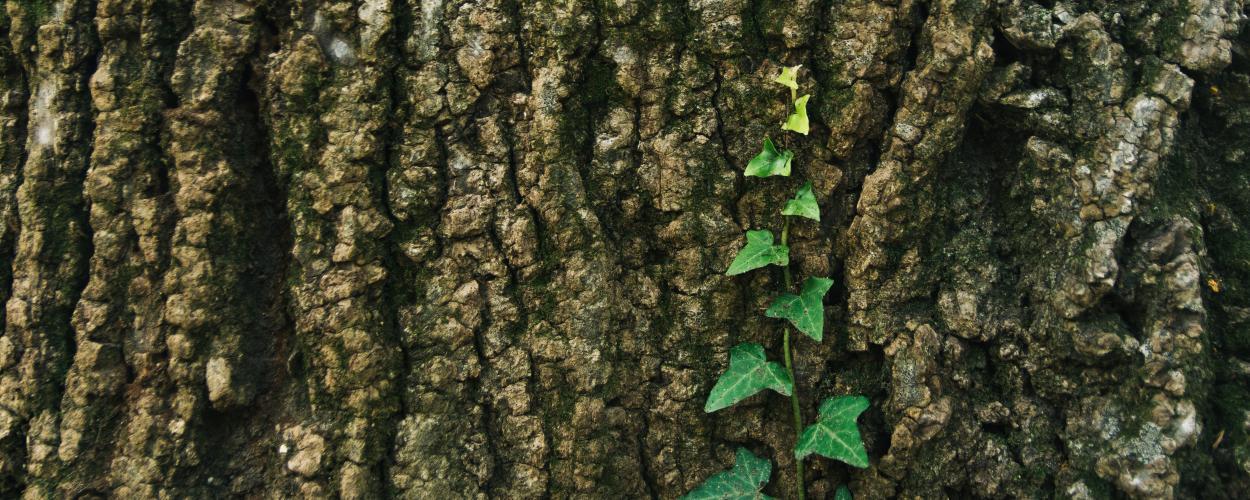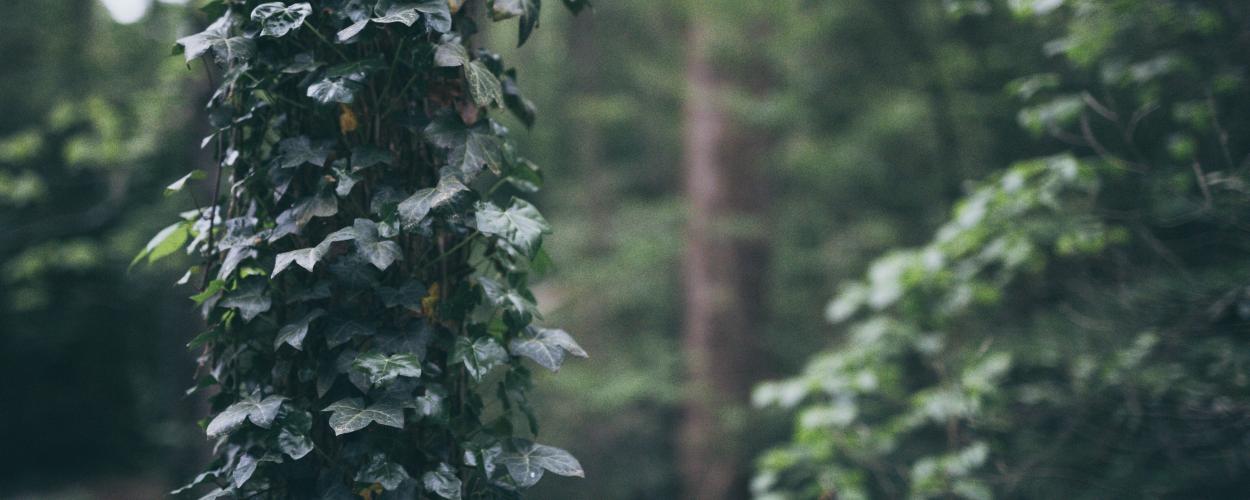


English ivy (Hedera helix) was introduced to North America and has become increasingly problematic in natural and human-altered landscapes throughout the region. Ivy spreads vegetatively and by seed and it tolerates a wide range of soil, moisture, and light conditions. It is still commonly grown and sold as an ornamental plant and valued for its hardy, attractive, evergreen groundcover. Ivy’s ability to take over forest understories, suppress the growth of native species, and alter the tree canopy makes it a serious invader.
The District is working to remove English ivy from community parks. Soon we will publish here the list of parks so you can follow the progress of this work.
Where you see it:
Ivy can be found growing on trees and as ground cover especially near creeks.
Why is it bad:
Ivy takes over forest understories, suppresses the growth of native plant, tree, and shrub species, decreases biodiversity, and alters a tree’s canopy, strength, and health.
What can you do:
Prevention:
• Prevent the plant from expanding and invading adjacent parks and natural areas.
• Don’t purchase, trade, or grow ivy, including ivy plants in hanging baskets or containers.
• Remove plants, plant parts, and seeds from personal gear, clothing, vehicles, and equipment.
• Ensure soil, gravel, and fill materials are not contaminated with ivy before leaving an infested area.
• Plants, plant parts, and seeds should be bagged before transport to an appropriate disposal site.
Removal:
• Ground cover: cut ivy using hand snips, pruners, or hand saws or pull ivy in the direction of
growth, loosening the roots from the ground.
• Trees: use pruners or saws, cut at chest height around the entire trunk being careful not to damage
the tree bark or surface; remove from the tree and surrounding ground within 1–2 meters of the tree.
When do you remove:
Fall and spring when the ground is moist; around watercourses, period of least risk to fish species.
How long will it take:
Depends on the maturity of the ivy. Immature ivy may see control after only 1–2 removal periods; mature ivy will take many years of removal.
